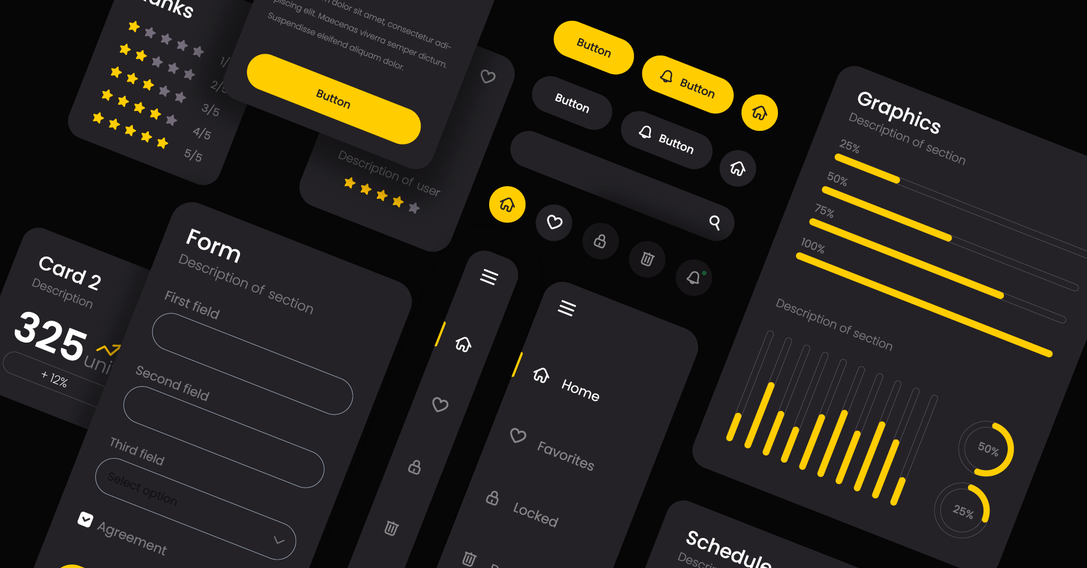7 min
October 22, 2023
Budget in IT projects
When asking questions about a client's project budget, we first and foremost try to tailor our offerings to specific needs and financial capabilities. We want to offer solutions that best fit the expectations and parameters of the project, while staying within the specified financial means.
Knowing the amount of the budget also allows us to manage our resources and time accordingly. We can, for example, focus on the most important functionalities or adjust the schedule if it turns out that the funds available to the client are strictly limited.
Listen to the audio version of this article.
Is the budget question necessary?
Yes, because the key is to understand the financial framework within which we are moving.
Imagine a situation in which you are buying a car and your requirement is: speed. If you don't specify a budget, the best answer is a hypercar like a Pagani or a Bugatti. On the other hand, if you specify a budget, i.e. your requirement is speed AND a maximum of X£, then, depending on the budget, the answer could be a car from one of the German or Japanese brands.
If, in planning the finances of the project, you start from the other side, i.e. you treat the budget not as a constant, but as a resultant value, and take as constant values the amount of traffic, the size of the assortment, the functionalities, then it is we who will propose both the technology and the budget, guided by the best interests of the client. You will then assess whether you are able to make the investment at this level of cost.
The budget question is therefore not a way of limiting the client or exploring their maximum financial possibilities, but a pragmatic necessity related to the multitude of paths that can be taken in IT projects. At Beecommerce.pl/en, we aim to work together with the client to achieve project success and to continually ensure that the resources invested are put to good use in creating value.
Therefore, if you feel uncomfortable when we directly ask you about the budget, we can always discuss sample costs and budgets during a familiarisation meeting. This is precisely to clarify the whole process and ensure a successful collaboration.
The role of the client's budget in software development is not to limit creativity, find sub-optimal solutions or reduce the quality of the project. Rather, it is a tool to help you make informed decisions to ensure that you get the most value for your investment given your project goals and financial resources.
We can think of the budget as a guideline in the world of software development. It helps us select the most valuable and viable solutions that are tailored to your specific needs, requirements and capabilities.
Of course, we don't expect you to provide an exact amount, but you should provide an indicative figure that reflects your expectations and capabilities.
With a budget in mind, we can move on to the next steps: analysing the scope of work, selecting technology and tools, setting the project schedule and implementation.
1. Analysis
Imagine arriving at a big trade show, an exhibition of cutting-edge technology, with no idea of what your spending limit is.
You're attracted to the many novelties, the shiny gadgets, but without a specific budget it will be difficult to make wise choices, right? You want everything, but do you actually need everything, or can you actually afford everything?
These days, the IT industry is just such a great exhibition of technological innovation - using cloud servers versus local servers, choosing a progressive web app over native apps, headless technology, voice search engines, image search, GPT4 technology and many, many more possibilities. With knowledge of your budget, as an experienced software house, we will help you to do some fruitful 'shopping' and choose the best solutions from this technological thicket of possibilities.
2. Tailor-made solutions
By precisely determining the budget that the client has for their project and, above all, by clearly defining the goals set for the project, we can select the right technologies and tools to help you succeed. The solutions we propose are often technological building blocks, the skilful combination of which will create real value for you.
At beecommerce.pl, we use both available OpenSource projects, commercial software and software written "from scratch".
3. Performance
A clear budget helps us to see the bigger picture and more effectively lay out system and infrastructure components, selecting technologies and solutions that are appropriate to the purpose of the project.
To give a tangible example, if you order Magento Headless with a development environment and allocate 100£ per month for infrastructure, then "on paper" a fast system will probably be slower than WordPress written for 5000£. Similarly, when it comes to implementation: written Magento + VSF in 100h will be a technological and visual monster. Therefore, it is important to match technology to requirements and budget. Or budget to requirements and technology.
From our point of view, an important part of preparing for the valuation and implementation of the project is to present to the client the possible tools to be used and the scope of their capabilities. Examples from the market are useful at this stage, as often the technological concepts we use are abstract formulations for less technical people. This is why we often go through various references in the workshop, asking how the planned project should work and look like.
If you are a retail startup, you will not need a sophisticated recommendation system based on artificial intelligence. A simple online ordering system will address key needs and reduce budget burdens
4. Staged approach
A phased approach to development involves a step-by-step implementation of the project. We start with the most important functions - those without which your product could not work in production.
Often, what matters in projects is the shortest possible Time To Market, i.e. publishing an MVP version. This is a great approach to iteratively build the product, thus adapting it to the feedback from the market gathered in the meantime. We have already seen many projects which, having been developed over a 2-3 year period and kept in the dark dungeons of software houses, were by the time they saw the first rays of sunlight already mismatched to the rapidly changing business environment and thus thrown in the bin. Let's call it working-class business suicide by request.
The step-by-step approach allows you to quickly generate revenue from the core functions implemented, which you can then develop and add new pieces to the technological puzzle. Thus, you can realise the basics of the project and develop it in further steps.
What's more, by gradually handing over small pieces of the project, you can test the product in the market before committing fully to the entire investment. This is somewhat akin to test-driving a car before finalising a purchase or tailoring a suit.
5. Development and risk reduction
Every business aims to grow and the software should be able to grow with the business and efficiently keep up with the growth in customers and needs.
If your budget is larger than you need for initial development, we can start laying the foundations for future growth early on. We can suggest additional features that will add value, such as embedding GA4 analytics, adding new modules or plug-ins to your existing CMS, plan the scalability of the software.
However, it is about finding a balance. If your budget is more modest, we don't need to plan it all in advance, we can divide the development into phases, depending on the revenue generated and therefore on the budget you have. We like to see how the solutions we implement fiannise the project themselves. For us, this is a sign that we have done a good job. And that our adventure together will be a long-term experience.
Software development may or may not be a winding and bumpy road. Unexpected costs may lurk around the corner. Finally, the business environment is changing, albeit with legal requirements like Omnibus and RODO.
When planning your budget, don't forget that software is 'alive', it evolves and this comes with a cost to adapt or maintain it. Therefore, don't plan to spend the entire budget on implementation, but allocate 20-50% for its development over several years.




